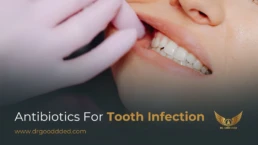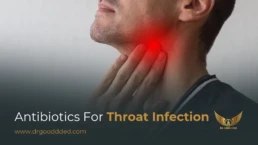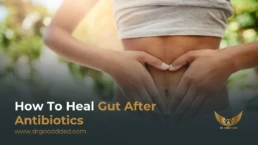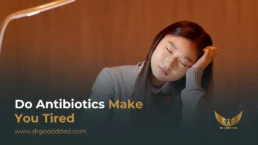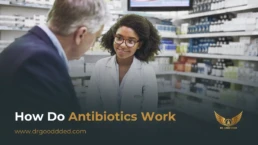When you feel sick and suspect an infection, knowing how to get antibiotics quickly becomes important. The right antibiotic can stop bacteria from spreading and help you heal faster. But taking antibiotics without guidance can cause serious problems.
Table of Contents
ToggleWhat Are Antibiotics and How Do They Work?
Antibiotics are medicines that kill bacteria or stop them from growing. They target specific types of bacteria in your body. For example, penicillin breaks down bacterial cell walls, while azithromycin blocks bacterial protein production.
It’s important to know that antibiotics only treat bacterial infections, not viruses. Colds, flu, or COVID-19 are viral and don’t improve with antibiotics. Using antibiotics for viral illnesses can make you sicker later and worsen resistance problems.
Why You Should Never Self-Medicate With Antibiotics
You might think taking leftover antibiotics or buying them online will save time, but it’s risky. Self-medication can cause:
- Wrong antibiotic for the infection
- Dangerous allergic reactions
- Hidden side effects (like diarrhea or rashes)
- Stronger, resistant bacteria that are harder to kill later
Even if your symptoms feel familiar, bacteria behave differently. Only a medical professional can decide which antibiotic fits your case and dose. Always consult before taking any antibiotic.
The Growing Problem of Antibiotic Resistance
The problem of antibiotic resistance happens when bacteria adapt and stop responding to antibiotics. This makes common treatments useless, forcing doctors to use stronger or more toxic drugs.
Overusing antibiotics or stopping them early fuels this problem. Each time bacteria survive, they learn how to resist the drug.
Global health groups like the WHO and CDC have warned that antibiotic resistance could make simple infections life-threatening again. The best way to prevent this is by using antibiotics only when prescribed and finishing the full course.
When Antibiotics Are (and Aren’t) Needed
Antibiotics are powerful, but they only work when bacteria are the true cause of infection. They won’t help viral illnesses like a cold or the flu.
When antibiotics are needed:
- Bacterial throat infections (like strep throat)
- Urinary tract infections (UTIs)
- Bacterial pneumonia or ear infections
- Skin infections with redness, warmth, or pus
- Tooth infections or abscesses
When antibiotics aren’t needed:
- Viral colds, sore throats, and most coughs
- Flu or COVID-like symptoms
- Mild sinus infections that get better on their own
- Runny nose or sneezing caused by allergies
Reasons You Might Need Antibiotics Quickly
Some infections progress fast and need quick treatment. Delays can cause pain, spread infection, or even lead to hospital stays.
Common Infections That Require Antibiotics
- Bacterial Throat or Ear Infections: If you have severe throat pain, white patches, or ear discharge, bacteria might be involved. A quick swab test can confirm this, and antibiotics can ease symptoms fast.
- Urinary Tract Infections (UTIs): A UTI causes burning during urination, frequent urges, or cloudy urine. It’s crucial to get antibiotics quickly before it spreads to the kidneys. While drinking water and cranberry juice might help mild cases, most need proper antibiotics to clear fully.
- Skin Infections or Wound Infections: Cuts or wounds that turn red, warm, or painful may need antibiotics. Treating early prevents abscesses or blood infections.
- Tooth Infections or Dental Abscesses: A throbbing tooth, jaw swelling, or pus around a gum means bacteria are active. Antibiotics for tooth infection can stop the spread until a dentist fixes the cause.
When “Fast Access” Is Important
If you have a high fever, spreading redness, or pain with swelling, do not wait. Go to urgent care or an emergency department. Fast antibiotics in these cases can prevent sepsis (a life-threatening body reaction to infection).
Safe and Legal Ways to Get Antibiotics Quickly
There are legal, safe methods to access antibiotics without risking fake or harmful drugs.
Visit a Local Doctor or Clinic
Walk-in clinics and urgent care centers allow same-day visits. They can test and prescribe antibiotics immediately if needed.
If symptoms are severe, head to the hospital emergency department. They have IV (intravenous) antibiotics for fast action.
Use a Telemedicine or Online Doctor Service
Online healthcare lets you talk to a licensed doctor from your phone or laptop. The doctor asks about your symptoms, reviews photos if needed, and issues a digital prescription.
This is one of the best ways to get antibiotics quickly, especially if local clinics are full. Telehealth offers:
- Speed: most appointments happen within minutes
- Safety: licensed doctors follow proper medical checks
- Convenience: no waiting rooms, no travel
After your consultation, prescriptions go directly to your preferred pharmacy.
Visit a Local Pharmacy With a Prescription
Once you get a valid prescription, head to your nearest pharmacy. Many offer same-day pick-up or home delivery. Some large chains even have 24-hour service to ensure you get antibiotics quickly when it matters.
Community Health Centers and Government Clinics
If you don’t have insurance or money is tight, community clinics can help. They often provide affordable visits and reduced-cost medications. You’ll still get safe, legal antibiotics prescribed by a professional.
Dental and Urgent Care Specialists (for Dental Infections)
For tooth infections, call an emergency dentist or dental urgent care. They can prescribe antibiotics and schedule follow-up treatment. Don’t rely on leftover antibiotics, as dental bacteria often need specific medicines.
What to Avoid When Trying to Get Antibiotics Fast
While you might want a quick fix, avoid these unsafe shortcuts.
Buying Antibiotics Without a Prescription
Buying drugs without a prescription is illegal in most countries. Many unlicensed websites sell fake or contaminated pills. Stick to trusted pharmacies.
Using Leftover or Shared Antibiotics
Never use leftover antibiotics from a past illness. They might not treat your current infection. Sharing medicine with others can also spread resistant bacteria.
Taking Antibiotics for Viral Illnesses
Antibiotics can’t cure colds, the flu, or most sore throats. Taking them for viral infections wastes medicine and encourages resistant germs.
Ordering Antibiotics from Unverified Online Sources
Some websites claim to ship antibiotics without prescriptions. These are unsafe. Many are not tested or properly stored. Always use verified pharmacies that require a doctor’s prescription.
How to Prepare for a Doctor Consultation
Good preparation helps your doctor diagnose faster and prescribe the right medicine.
It also saves time, so you can get antibiotics quickly when needed.
List All Your Symptoms and Duration
Doctors rely on your details to make the right call.
What to note:
- When the problem started
- How it has changed over time
- What makes it better or worse
- If you have fever, pain, or swelling
- Any pattern (like worsening each evening or after eating)
Example: “Sore throat for 4 days, worse in the morning, with mild fever.”
Mention Any Allergies or Past Antibiotic Reactions
Sharing allergy history helps doctors avoid unsafe medicines.
Tell your doctor if you’ve ever had:
- Rash, itching, or hives after medicine
- Trouble breathing or swelling of the lips
- Stomach cramps or severe nausea after antibiotics
- Known allergies to penicillin or sulfa drugs
Some antibiotics can cause serious allergic reactions if used again.
Bring Previous Prescriptions or Lab Reports
Old prescriptions or test results can save valuable time. They help doctors choose the most effective and safe antibiotic.
What to bring:
- Previous antibiotic names or dosages
- Lab test results (urine, throat swab, wound culture)
- Hospital or clinic reports
- Notes from earlier treatments for similar infections
Be Honest About Self-Medication
If you have already taken something, tell the doctor. Full transparency helps them avoid unsafe combinations.
What to Expect After Getting a Prescription
How to Take Antibiotics Correctly
- Follow the exact instructions on timing and dosage
- Take with water unless told otherwise
- Avoid alcohol with certain antibiotics
- Never skip or double doses
- Don’t share your medicine with others
If you forget a dose, take it as soon as you remember unless it’s almost time for the next one.
Importance of Completing the Full Course
Stopping your medicine too early can bring the infection back stronger.
Why you should finish the full course:
- Prevents infection from returning
- Stops bacteria from becoming resistant
- Ensures full recovery
- Protects the effectiveness of antibiotics for the future
Even if you feel better, always finish your prescribed number of days.
Possible Side Effects and When to Call the Doctor
Most antibiotic side effects are mild like antibiotics make you tired, but some need quick attention.
Knowing what’s normal helps you stay safe.
Common mild effects:
- Nausea or mild stomach pain
- Diarrhea or soft stools
- Dizziness or headache
Serious effects: Call your doctor right away if you notice:
- Rash, hives, or swelling
- Trouble breathing
- Severe diarrhea or bloody stools
- Intense stomach cramps
Never ignore new or worsening symptoms.
How Soon You Should Expect to Feel Better
Most bacterial infections improve within 2–3 days. If not, return for re-evaluation. Sometimes a different antibiotic is needed.
Alternative Solutions When You Can’t Get Antibiotics Immediately
Sometimes you can’t see a doctor right away. Until you do, these steps may help:
Pain Relief and Symptom Management
Over-the-counter (OTC) pain relievers like acetaminophen or ibuprofen can reduce pain and fever.
Hydration, Rest, and Home Remedies
Drink water and rest as much as possible. Your body heals faster when hydrated and well-rested.
Natural Antimicrobial Foods
Honey, garlic, and ginger have mild antibacterial properties, but they can’t replace antibiotics. Use them only as supportive care.
These foods might also help your body flush medicines faster if you’re wondering how to get antibiotics out of your system quickly after treatment ends.
Monitoring Symptoms Until Medical Care Is Available
Keep track of changes. If pain increases, fever rises, or swelling spreads, seek urgent medical help.
FAQs
Can I get antibiotics without seeing a doctor?
No. Antibiotics are prescription-only for safety reasons. Seeing a licensed clinician ensures you get the right type, dose, and duration for your infection.
Are online antibiotic prescriptions legal and safe?
Yes, as long as they come from licensed telemedicine platforms. These services are one of the easiest ways to get antibiotics quickly and safely.
How fast can I get antibiotics after an online consultation?
Most online doctors send prescriptions to your pharmacy within an hour. You can usually pick them up the same day.
Can pharmacists prescribe antibiotics directly?
In some areas, trained pharmacists can prescribe certain antibiotics for simple infections. Always ask if this service is available in your region.
What should I do if I can’t afford a doctor visit?
Visit community health centers or low-cost clinics. They provide affordable check-ups and medications for patients without insurance.
How do I know if my infection really needs antibiotics?
A doctor decides based on tests or symptoms. Not all infections require them. Proper diagnosis helps avoid misuse and resistance.
What happens if I stop antibiotics early?
Stopping early allows bacteria to survive and possibly become resistant. Always finish your prescribed course to prevent recurrence.
Can I take leftover antibiotics from a past prescription?
No. Leftover antibiotics might have expired or be the wrong type. If you wonder how quickly antibiotics get outdated, most expire within 1–2 years, losing strength.
What are the fastest options for antibiotics for tooth infections?
See an emergency dentist or tele-dentistry service. They can prescribe antibiotics quickly and plan treatment for the root cause.
Is it safe to order antibiotics online from abroad?
No. Many international sellers are unverified. Drugs might be fake or unsafe. Stick with local licensed pharmacies that require a doctor’s prescription.

This article is medically reviewed by Dr. Chandril Chugh, Board-Certified Neurologist, providing expert insights and reliable health information.
Dr. Chandril Chugh is a U.S.-trained neurologist with over a decade of experience. Known for his compassionate care, he specializes in treating neurological conditions such as migraines, epilepsy, and Parkinson’s disease. Dr. Chugh is highly regarded for his patient-centered approach and dedication to providing personalized care.


